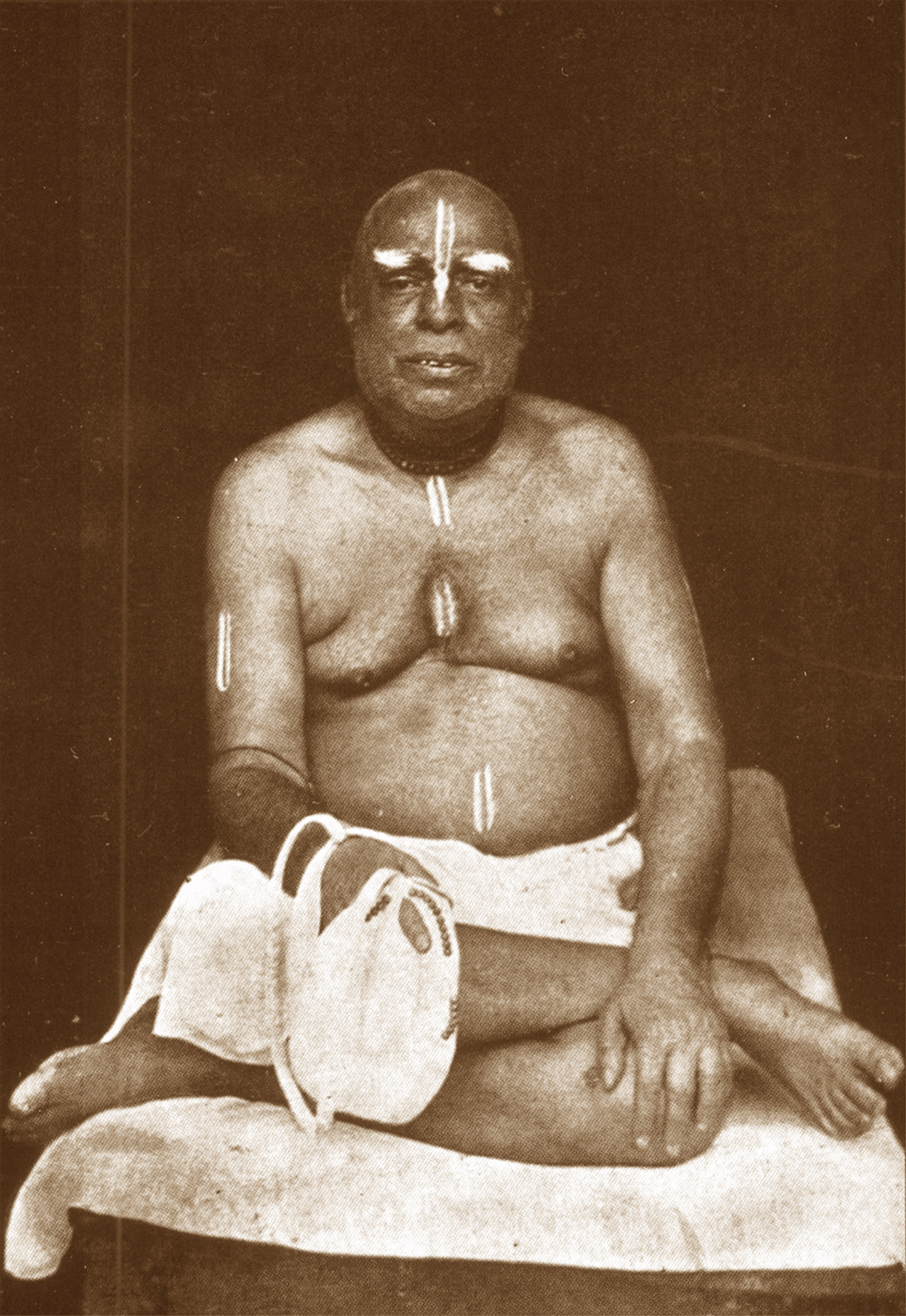
Who does not know the author of Śrī Upadeśāmṛta, Śrī Rūpa Gosvāmī? His ancestry was a royal dynasty of bhāradvāja gotrī brāhmaṇas from Karnataka, South India, who were particularly knowledgeable in the Yajur Veda. Impelled by some special circumstances, his great-grandfather Śrī Padmanābha left his ancestral home and settled in Bengal in a village named Naīhāṭī, which is situated on the banks of the Bhāgīrathī River. Padmanābha’s grandson Śrī Kumāradeva had three sons: Amara, Santoṣa and Vallabha. Later they became famous as Śrī Sanātana Gosvāmī, Śrī Rūpa Gosvāmī and Śrī Anupama. Impressed with their extraordinary scholarship, qualifications and virtuous conduct, the Muslim ruler of Bengal at that time, Hussain Shah, gave Rūpa and Sanātana the titles Sākara Mallika and Dabīra Khāsa and made them his prime minister and personal secretary. But after some time they came into contact with the saviour of Kali-yuga, Śrī Caitanya Mahāprabhu. Renouncing their colossal wealth and all worldly relationships, they became distinguished ascetics, fully dedicating themselves to serving the internal desire of Śrī Rādhā-Kṛṣṇa. On the order of Mahāprabhu they restored the forgotten holy places of Vraja-maṇḍala, re-established the proper methods for deity worship, composed authoritative scriptures on bhakti and established the codes of good conduct for devotional life.
We have heard from our gurudeva and other Vaiṣṇavas, and we have also read in authentic books, that Śrīla Bhaktivinoda Ṭhākura was given the title ‘Seventh Gosvāmī.’ From the time of the six Gosvāmīs up to his time, no one else was ever designated as such, but during his manifest stay in this world (1838–1914), learned persons and devotees saw his glorious activities and gave him this title. It was he who once again illuminated the true principles of Gauḍīya Vaiṣṇavism. If he had not appeared when he did, these pure teachings would have been forever drowned in an ocean of oblivion.
By composing hundreds of books on bhakti, Bhaktivinoda Ṭhākura re-established in this modern era, which is degraded by excessive sensual pleasure, the flow of pure devotion (śuddha-bhakti), which had temporarily stopped. He is an intimate, eternal devotee of Śrī Caitanya Mahāprabhu. Due to his having propagated in different ways the pure philosophy of divine love (prema-dharma) exhibited and preached by Śrīman Mahāprabhu, he is famous as the Seventh Gosvāmī. Because he manifested Mahāprabhu’s holy names (śrī gaura-nāma), Mahāprabhu’s holy land (śrī gaura-dhāma), Mahāprabhu’s innermost desire (śrī gaura-kāma) and the narrations of Mahāprabhu’s pastimes (śrī gaura-līlā), he is considered the incarnation of Vyāsa in Mahāprabhu’s pastimes.
―Śrīla Bhaktivedānta Nārāyaṇa Mahārāja (Śrī Upadeśāmṛta, Discerning the True Sentiments of the Soul)
The guru must be situated on the topmost platform of devotional service. There are three classes of devotees, and the guru must be accepted from the topmost class. The first-class devotee is the spiritual master for all kinds of people. It is said: gurur nṛṇām. The word nṛṇām means “of all human beings.” The guru is not limited to a particular group. It is stated in the Upadeśāmṛta of Rūpa Gosvāmī that a guru is a gosvāmī, a controller of the senses and the mind. Such a guru can accept disciples from all over the world. Pṛthivīṁ sa śiṣyāt. This is the test of the guru.
―Śrīla Bhaktivedānta Svāmī Prabhupāda (Śrī Caitanya-caritāmṛta Madhya-līlā 24.330)
https://prabhupadabooks.com/








